Milivoj Segan born in Turcevic Polje near Grubisno Polje, Croatia, in 1957.
After graduating from school and the Academy of Fine Arts in Zagreb, 1982 masterclass under Prof. Ivan Sabolic. Since 1979, he has worked as a professionak conservator in various
programmes of the Croatian Ministry of Culture.
He works as a sculpture and conservator in his own 600 m² studio.
Has participated in various joint exhibitions in Croatia and abroad.
Completed five commissions for public sculptures in 1994. In 2009, he was awarded the UNESCO prize for the restoration of the theatre in Osijek.
KERAMEIKON SILVER MEDAL at the CERAMICA MULTIPLEX
exhibition 2009.
Lives and works in Sesvete near Zagreb.
The address:
Selcinska c. 27
10360 Sesvete
Croatia
|
Milivoj Šegan has been awarded the KERAMEIKON SILVER MEDAL
at the CERAMICA MULTIPLEX 2009 competition. The exhibition of work admitted to the competition was the main event of the III International Festival of Postmodern Ceramics, which took place from 18 April – 24 Mai 2009 in Varaždin, Croatia.
The academically trained sculptor and conservator is familiar with all sculptural media but feels most strongly attracted to clay. Ai is the case with many artists, his relationship to art and life in general was shaped by his childhood experiences. He spent his younger years in the forested Bilogora region of northeastern Croatia, in direct and uncomplicated contact with nature and the earth. He was born near Ilova river, which has a significant
name, which means “Clay River”.
Seen from outside, this is an enchanting part of the country, where clay is still simply fired with the wood from the deciduous forests. Traditional potters with their simple firing techniques inspired Milivoj Šegan at an early age to think about the earliest origins, the origins of life and of the world itself. In the region where he spent his childhood, people of various ethnicities still live, who had fled to this mountainous region and found shelter there from dander, disasters and violence.
They had brought with them a range of customs, lifestyles and skills from their varied backgrounds. Even today, there is still the intoxicating, pungent, sweet smell of the plant kingdom, and a wide range of animals live there. It is the horses in particular that are a permanent and inexhaustible source of inspiration to Šegan, although this is not his only source.
Šegan kneads the clay, presses it skillfully in his hands, squeezes it with his finger and thumb as if making pinch pots,
but he is sensitive and obedient, leaving the leading role to the clay itself and making use of his own great adaptability.
And he approaches of its longevity and durability but also of its fragility and fickleness.He says he is well able to sense the clay’s need to become dry and rigid. In this creative process, Milivoj Šegan is inspired by profound thoughts about the origins of life that are incorporated in the work process and almost make the artist seem to be a kind od mediator or catalyst in the realization of universal concepts.
The ochre color of the clay, like the color of a ripening fruit, changes during the firing and shows a whole palette of ripe shades areas of grey that were not reached by smoke. As a sculptor, Šegan is mainly interested in form and texture in this
process, with the colors and their interplay a welcome random element.
Šegan makes his sculptures in one breath, like a sketch, or in the way Japanese calligraphers work – after a long,
concentrated preparation, he creates an unrepeatable ideogram in one go.
Similarly, the apparent lightness of Šegan creativity is preceded by a long period of thought and mental preparation.
He owes it to his teacher at the Academy of Fine Arts in Zagreb that he has added a superstructure of intelligent intellectualism to his innate sensitivity. As a result of his training, he developed his own critical distance to his work.
“It has long been impossible to create an entirely original composition because there is always a correlation to something
that has already been created”, he says in this context.
The artist has intensively studied the problem of the relationship between time and space, going ever deeper into the field of quantum physics and quantum mechanics in the desire to grasp the depths and remote distances of the universe. But he is also aware that the physiology of the human body is only partly able to identify the signals and ever present vibrations as a result of the limitations of the receptors.
The question of the origins and the beginnings poses itself repeatedly. In the fragility of our knowledge, would we ever be able to recognize these signals and messages that the universe tirelessly send us? Our brief sojourn on earth only enables us to comprehend the easily accessible parts of what is hugely incomprehensible and immeasurable.
As a professional conservator, Milovoj Šegan is engaged in the conservation and restoration of historical monuments.
The phenomenon of disintegration and decay also interest him when he is working with clay. He exposes his works during the firing, integrating fissuring and breakages caused in the wood firing in the overall conception of his work.
These welcome cracks emphasise the archaic appearance. However, he ultimately joins the individual pieces from this
encounter with the flames to form a harmonious whole.
In the phase in which Milivoj Šegan was studying mythological forms, the winged horses were created as well as the prizewinning Pegasus or Nike, the goodness of victory. Crucifixes on a wooden base were made during a phase of religious reflection during the war in Croatia, lending a further dimension to the overall archaic impression of the work.
Most recently, the artist has studied geometric phenomena, with the circle and the triangle playing an important part in his work, as do the spiral and the oval. In his ceramics, Milivoj Šegan pays his full respects to tradition, but with his continual reexaminations and experimentation, he charts his own broad course across the ocean. |
|
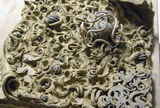 III Millenium MMIX
|
|
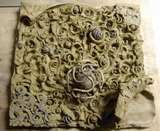 III Millenium MMIX
|
| |
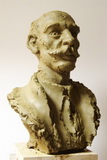 Portrait of a Poet
|
|
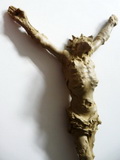 Crucifixion
|
| |
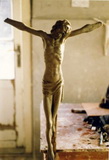 Crucifix
|
|
 Fall of Pegasus
Row clay |
| |
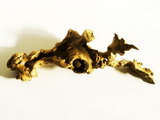 Head of caribou
|
|
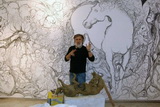 Artist in his workshop
|
| |
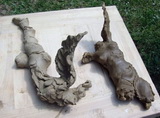 Sketch from Varazdinske Toplice
|
|
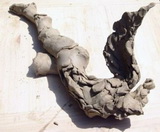 Sketch from Varazdinske Toplice
|
| |
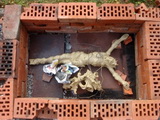 Simple burning
|
|
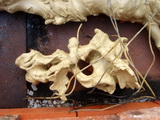 Preparation for burning
|
| |
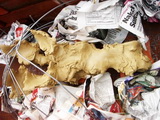 Preparation for burning
|
|
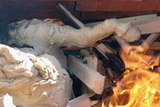 Burning
|
| |
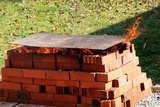 Burning
|
|
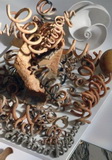 Still life from the cycle The Destroyed Window of Euclid
|
| |
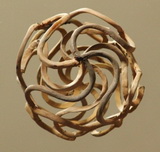 God Particle-detail of the still life from the cycle The Destroyed Window of Euclid
|
|
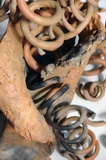 Detail
|
| |
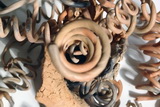 Detail
|
|
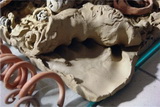 Detail
|
| | |
|
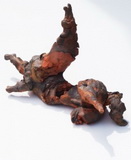 Fall of Lippizaner horse
|
| |
 Fall of Lippizaner horse
|
|
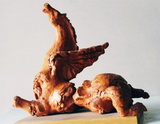 Fall of Pegasus
|
| |
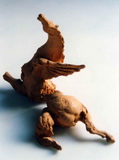 Fall of Pegasus
|
|
 Fall of Lippizaner horse KERAMEIKON SILVER MEDAL
on the exhibition CERAMICA MULTIPLEX 2009 |
| |
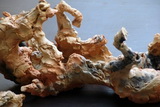 Detail
|
|
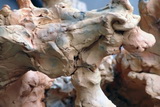 Detail
|
| |
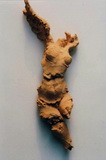 Fall of Psyche 1991 38x19x7 cm |
|
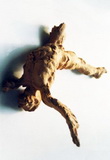 Fall of Icarus
|
| |
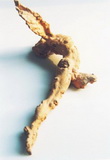 Fall of Icarus
|
|
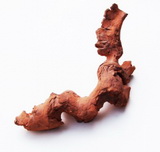 Fall of Icarus 1993 161x22x10 cm |
| |
 Fall of Icarus 1993. 12x23x9 cm |
|
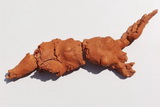 Psyche
|
| | |
|
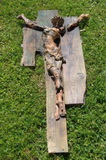 Crucifix
|
| |
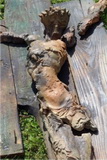 Detail
|
|
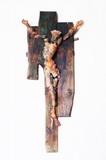 Crucifix
|
| |
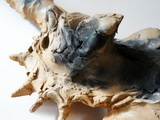 Detail
|
|
 Crucifixion
|
| |
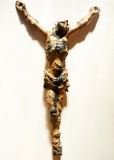 Crucifix
|
|
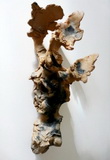 Head of caribou
|
| |
 Fall of Icarus
2010 |
|
| | |
|
| | | |
|
|
| |
|
